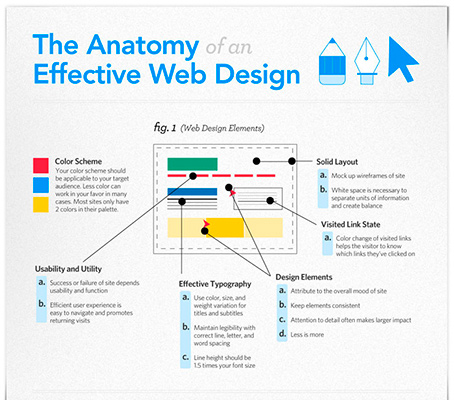Key Elements Of Internet Site Design: Techniques For Creating An Easily Accessible Customer Experience
Key Elements Of Internet Site Design: Techniques For Creating An Easily Accessible Customer Experience
Blog Article
Article By-McKnight Skinner
When it involves web site style, making sure user-friendliness is vital. From google search engine optimization to structured navigating, every element plays a critical duty in creating a website that caters to your audience's requirements. However what about the better information that can make or break a customer's surfing experience? Keep tuned as we discover some often-overlooked ideas that can boost your site's functionality to the next level, making it really stick out in the digital landscape.
Importance of Responsive Style
Responsive style is a critical element of contemporary web site development. Ensuring your internet site is receptive ways that it can adapt to various screen dimensions and devices, supplying a seamless experience for customers.
With the enhancing use smart devices and tablets to access the net, having a responsive style is crucial for reaching a bigger target market. It helps in enhancing customer experience by making your web site easy to browse and continue reading any device.
Additionally, responsive layout can favorably affect your search engine positions, as internet search engine like Google focus on mobile-friendly sites. By having a receptive layout, you're additionally future-proofing your internet site, as brand-new tools with varying display dimensions continue to emerge.
Simplify Navigation Structure
To enhance customer experience and assist in easy access to details on your internet site, simplifying the navigating structure is critical. When developing your site, concentrate on creating a clear and instinctive navigation food selection that aids visitors discover what they're trying to find rapidly.
Limitation the number of menu things to the fundamentals, organizing associated pages together to prevent frustrating users. Use detailed tags that plainly show the content of each page, making it less complicated for users to understand where each web link will take them.
Take into consideration carrying out dropdown menus for subcategories to stop jumbling the major navigation bar. Additionally, include a search bar plainly on the web page for users who like searching for specific info.
Focus on mobile responsiveness in your navigating layout to ensure simple access on all gadgets.
Maximize Web Page Load Rate
Improving web page tons rate is critical for maintaining visitors on your web site. Slow-loading web pages irritate individuals and can lead to high bounce rates. To Go At this site , begin by maximizing pictures. Compress images without jeopardizing top quality to reduce their file sizes.
Furthermore, make it possible for web browser caching to save frequently accessed resources locally, speeding up tons times for returning visitors. Minify CSS, JavaScript, and HTML documents by eliminating unneeded personalities, remarks, and format, boosting tons rate.
Think about making use of a content delivery network (CDN) to disperse your internet site's web content across multiple servers worldwide, lowering latency for individuals accessing your site from various locations. Last but not least, restrict using third-party scripts and plugins, as they can considerably affect load times.
Final thought
To conclude, by including responsive design, streamlining navigation, and optimizing web page lots speed, you can produce an user-friendly website that interest a bigger target market and enhances customer experience. These essential elements ensure that site visitors can easily gain access to and navigate your site across different devices, leading to boosted involvement and satisfaction. By concentrating on these crucial elements, you can develop an effective website that maintains customers coming back for even more.
